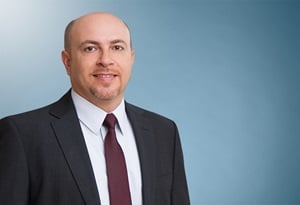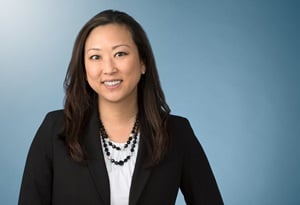Summary of New California COVID-19 Supplemental Paid Sick Leave – What Employers Need to Know
On February 9, 2022, California Gov. Gavin Newsom signed Senate Bill 114, which provides COVID-19 supplemental paid sick leave (SPSL) for covered employees who are unable to work or telework due to COVID-19 related reasons from January 1, 2022 through September 30, 2022. SB 114 is nearly identical to Assembly Bill 84 (AB) which was passed by the California Legislature on February 7, 2022. SB 114 takes effect on February 19, 2022, (10 days after the bill is signed by Gov. Newsom) and adds Sections 248.6 and 248.7 to the California Labor Code.
Among other things, SB 114:
- Applies to employers with more than 25 employees.
- Establishes a new bank of COVID-19 related SPSL.
- Broadens the reasons employees can take COVID-19 SPSL
- Permits employers to request proof of a positive COVID-19 test as to the employee or the employee’s family member.
- Requires retroactive payment if an employee would have been eligible for SPSL since January 1, 2022.
- Will remain in effect until September 30, 2022.
Why Now?
Under Senate Bill (SB) 95 that was enacted in 2021, California required employers with more than 25 employees to provide their employees up to 80 hours of SPSL for COVID-19 related reasons from January 1, 2021 to September 30, 2021. SB 95 expired on September 30, 2021.
The California Legislature passed AB 84 on February 7, 2022, a nearly identical bill to SB 114.
Are More Employers Covered?
Like SB 95, SB 114 still applies to public and private employers with more than 25 employees as defined by Labor Code section 245.5.
Will Certain Employees Continue to be Treated Differently?
Yes. Like SB 95, there are special provisions for firefighters, in-home supportive service employees and personal waiver care service providers. Employers in those industries should consult with the new law and their counsel for further information.
Are There New Qualifying Reasons for Leave?
Yes. There are four qualifying reasons for SPSL under SB 114.
As with SB 95, an employee is entitled to SPSL if:
The employee is subject to a quarantine or isolation period related to COVID-19 (as defined by an order or guidelines by the California Department of Public Health, the CDC or local public health authorities). Should an employee be subject to more than one quarantine or isolation period, the employee shall be permitted to use the SPSL under the order or guidelines that provides for the longest minimum period).
- The employee is advised by a health care provider to self-quarantine or isolate due to concerns related to COVID-19.
- The employee is attending an appointment to receive a vaccine for protection against contracting COVID-19.
- The employee is experiencing symptoms related to a COVID-19 vaccine that prevent the employee from being able to work or telework.
- The employee is experiencing symptoms of COVID-19 and seeking a medical diagnosis.
- The employee is caring for a family member (as defined under Labor Code section 245.5(c), including a child (regardless of age or dependency status), parent or stepparent, spouse, registered domestic partner, grandparent, grandchild, or sibling) who is subject to a quarantine or isolation period, or who has been advised to self-quarantine.
- The employee is caring for a child (as defined under Labor Code section 245.5(c)) whose school or place of care is closed or otherwise unavailable for reasons related to COVID-19 on the premises.
SB 114 expands qualifying reasons with the following additional reasons related to a COVID-19 vaccine booster:
- The employee is attending an appointment to receive a vaccine booster for protection against contracting COVID-19 (as opposed to only initial doses of the vaccine).
- The employee is attending an appointment for a family member to receive a vaccine or a booster for protection against COVID-19.
- The employee is caring for a family member experiencing symptoms related to COVID-19 vaccine or booster that prevents the employee from being able to work or telework.
How Much Leave Are Employees Eligible For?
Employers must provide up to 80 hours of SPSL to a full-time employee or an employee who worked or was scheduled to work, on average, at least 40 hours per week in the two weeks preceding the date that the employee took COVID-19 supplemental paid sick leave. The 80 hours is split into two 40 hours leave banks: one bank of leave of up to 40 hours applies if the employee or the employee’s family member tests positive for COVID-19; the second bank of leave of up to 40 hours is for the other qualifying reasons discussed above (including attending a COVID-19 vaccine or vaccine booster appointment for themselves or a family member, or is experiencing symptoms, or caring for a family member experiencing symptoms, related to a COVID-19 vaccine or vaccine booster).
Part-time employees are eligible for SPSL as follows:
- If the employee has a normal weekly schedule: the total number of hours the employee worked each day for the employer over one week.
- If the employee works a variable number of hours: seven times the average number of hours the employee worked each day for the employer in the six months preceding the date the employee took SPSL. If the employee has worked for the employer over a period of fewer than six months but more than seven days, SB 114 requires that this calculation instead be made over the entire period the employee has worked for the employer.
- If the employee works a variable number of hours and has worked for the employer over a period of seven days or fewer: the total number of hours the employee has worked for that employer.
Can an Employer Limit How Much SPSL is Taken?
Yes. For each vaccination or vaccine booster, an employer may limit the total SPSL to three days or 24 hours unless the employee provides a verification from a health care provider that the employee or family member continue to experience symptoms related to COVID-19 vaccine or vaccine booster.
Can an Employer Require Proof of a Positive COVID-19 Test Before Providing SPSL?
Yes.
An employer may require an employee who tests positive for COVID-19 to take a diagnostic test, made available to the employee at no cost, on or after the fifth day after the first positive test and provide proof of those results. An employer may also request proof of a family member’s test results.
If the employee refuses to provide proof of a test result, an employer is not obligated to provide additional COVID-19 supplemental paid sick leave.
Can Employer Use SPSL as an Offset to Cal/OSHA’s Exclusion Pay Requirements?
No. Unlike SB 95, an employer cannot require an employee to first exhaust the SPSL before satisfying any requirement to provide exclusion pay required by the Cal/OSHA Emergency Temporary Standards.
What is the Calculation of the Hourly Rate?
For exempt employees, an employer must calculate the rate of pay in the same manner as the employer calculates wages for other forms of paid sick time.
For nonexempt employees:
- Calculated in the same manner as the regular rate of pay for the workweek in which the employee uses SPSL whether or not the employee actually worked overtime that week.
- Calculated by dividing the employee’s total wages, not including overtime premium pay, by the employee’s total non-overtime hours worked in the full pay periods within the prior 90 days of employment. There are additional provisions for employees paid by piece rate, commission or other methods.
The amount of SPSL is capped at $511 per day and $5,110 total per employee unless these amounts are increased by federal law.
Is There a Notice Requirement?
Yes. Employers must post a notice of the new requirements in a conspicuous place in the workplace, or disseminate by electronic means if the employees do not frequent a workplace. The California labor commissioner is required to publish a model notice within seven days of the statute’s enactment (by February 16, 2022). It is anticipated that the labor commissioner will also update its useful FAQs.
Are There Itemized Wage Statement Requirements?
Like SB 95, there is an itemized wage statements (or other written notice) requirement as required by Labor Code section 246(i). But, the employer only needs to provide the amount of SPSL that the employee has used. If the employee has not used any SPSL, the employer must list zero hours.
The wage statement requirement becomes enforceable on the next full pay period after February 19, 2022.
How Does SB 114’s Retroactivity Work?
SB 114 applies retroactively to January 1, 2022.
For any leave taken prior to when SB 114 took effect, upon oral or written request of the employee:
- If the covered employee was not previously compensated, the employer should provide the employee with retroactive payment greater than or equal than the amount of compensation for SPSL. The amount should be paid on or before the next full pay period after the oral or written request of the employee.
- If the employee was compensated, then upon the oral or written request of the employee, the employee should be credited for any leave hours used for COVID-specific leave purposes and the employer should be credited for providing those hours as COVID-19 supplemental paid sick leave.
Can This Leave Run Concurrent With, or in Lieu of, Other Leaves?
Generally, no. This bill prohibits an employer from requiring an employee to use other paid or unpaid leave, paid time off or vacation time provided by the employer to the employee before that employee uses SPSL or in lieu of SPSL.
Is This Law Permanent?
No. SB 114 is set to expire on September 30, 2022.
For More Information
Faegre Drinker will continue to monitor and provide insights with respect to this new law and other COVID-19 related topics. Insights will be updated on the firm’s COVID-19 Resource Center.



